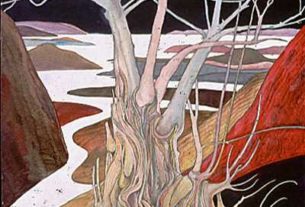Did You Know…?
La Cucaracha (The Cockroach), one of Mexico’s best known corridos, is a comic, satirical song, with infinite possibilities for creative verses.
The typical chorus is:
La cucaracha, la cucaracha
Ya no puede caminar
Porque no tiene, porque le falta
Marihuana que fumar.
Which translates into English as
The cockroach, the cockroach
Can not walk anymore
Because it hasn’t, because it lacks
Marijuana to smoke
To preserve a sense of propriety, the last line is often substituted, especially in children’s versions, with ” limonada que tomar” (lemonade to drink) or ” patitas de atrás” (hind legs).
But what is the history behind this song, and how did a cockroach come to be a pot smoker? For that matter, what’s the history of marijuana smoking in Mexico?
The origin of the song is unknown. Even though several nineteenth century sources quote verses which describe the Moorish wars (15th century) in Spain, it is very unlikely that the song is anything like that old. Early versions of the song make no mention of pot smoking, but this is hardly surprising given that pot smoking did not become popular in Mexico prior to the start of the twentieth century.
It is perhaps worth recording that some on-line sources of dubious reliability claim that marijuana smoking was common among Pancho Villa’s supporters as early as 1895. However, Villa was born in 1878, and would have been only 17 years old at the time, and without many supporters…
The first recorded use of marijuana in Mexico dates back to the 1880s. This is surprisingly late. By 1870, cannabis was already listed in the U.S. Pharmacopoeia as a medicine for a variety of illnesses.
Botanists disagree about the precise number of distinct cannabis species, but agree that Cannabis sativa, which is indigenous to Mexico, is a very close relative of Cannabis indica, the main source of marijuana, which is thought to have originated in central Asia. Cannabis indica has a long history of use in traditional medicine in Africa and Asia and was introduced into Mexico by Spanish traders, though the century in which this occurred is uncertain. The word marijuana was slang, in Mexico, for the dried leaves and flowering tops of its indigenous cousin, Cannabis sativa.
The earliest mention of marijuana growing wild in Mexico that I have so far encountered comes from Adolfo Dollero’s México al día (impresiones y notas de viaje) [Mexico Today (impressions and travel notes)]. Very little is known about this educated Italian traveler who apparently resided in Mexico for at least fifteen years. His book, almost a thousand pages long, provides detailed descriptions of much of the country in 1907. Setting out from Chapala, a “fashionable bathing resort” with “magnificent chalets” and a “privileged location and truly unbeatable climate” to cross the lake, Dollero witnesses a giant water spout. Safely on the southern shore, he describes the mineral wealth of the hills and then moves on to focus on the flora:
“There are also fine construction woods, many fruit trees, a large variety of medicinal plants and the terrible weed that causes temporary madness, that is to say marijuana (cannabis indica).”
By 1910, pot smoking was linked by anti-marijuana campaigners to the jazz clubs of New Orleans. Campaigners portray users of “loco weed” as “frenzied beasts” when under the influence of the drug. In 1911, South Africa outlawed cannabis claiming that it reduced productivity by black Africans in mines. At the First Opium Convention in 1912, the suggestion was made for the first time that cannabis be banned internationally.
Whatever their origins, both the song, and marijuana smoking (north and south of the border), increased greatly in popularity during the decade-long Mexican Revolution which began in 1910. It is during this time that the chorus as we now know it came into being, linking a cockroach’s walking ability to pot smoking.
This figurative cockroach may have been Pancho Villa, the revolutionary general, or Villa’s automobile, which was reputedly always breaking down. Alternatively, it may have referred to the gaggle of female camp-followers, soldaderas, who accompanied Villa and his men from battle to battle. Probably more likely, historically, is the claim that the “cockroach” was Mexican president Victoriano Huerta, who held office from 1913 to 1914. Huerta, a dictatorial leader if ever there was one, was ridiculed by his opponents as “a drunk and dope fiend who lived only for his daily weed.” Pancho Villa’s troops adopted La Cucaracha as their own song.
A typical stanza from the Mexican Revolution is:
Una cosa me da risa:
Pancho Villa sin camisa;
ya se van los carrancistas
porque vienen los villistas.
One thing makes me laugh:
Pancho Villa without his shirt;
Now the Carrancistas are leaving
Because the Villistas are coming.
The popularity of pot smoking has continued in both Mexico and the U.S. to this day. At various times in the last 50 years, several places, including Chapala-Ajijic, have enjoyed the dubious reputation of being the dope capital of Mexico. Ajijic’s reputation in the 1950s and 1960s for the use and abuse of illegal substances is well documented. Jerry Kamstra, for instance, provides a vivid description of the 1960s LSD cult in Ajijic in his Weed: Adventures of a Dope Smuggler.
Versions of La Cucaracha have been performed by countless bands and musicians, including Louis Armstrong, Bill Haley & His Comets, Doug Sahm, James Last, Les Negresses Vertes, Charlie Parker, Speedy Gonzales, Orquesta Pajaro Azul, Alfredo Brito, Lud Gluskin, Harry Roy, Lecuona Cuban Boys, Hank Snow, Trio Los Panchos, Eddy Wally, Riders In The Sky, Charlie Parker, King Curtis, The Champs, Los Machucambos, Los Paraguayos. and Cuco Sanchez. The next time you hear it, whether the lyrics are dated or contemporary, bear in mind that this old song has witnessed some major historical upheavals in its time.
Sources
- Blum, R. H. and Associates. Drugs I: Society and Drugs: Social and Cultural Observations. San Francisco: Jossey-Bass Inc. (1969).
- Dollero, Adolfo. México al día (impresiones y notas de viaje). Paris-Mexico: Librería de la Vda. De C. Bouret. 1911.
- Geller, A. and Boas, M. The Drug Beat. New York: Cowles Book Company, Inc. (1969).
- Kamstra, Jerry. Weed: Adventures of a Dope Smuggler. Harper & Row, New York. 1974
- Toor, Frances. A Treasury of Mexican Folkways. Crown Publishers. 1947.
For additional verses and history (in Spanish), see https://lyricsplayground.com/alpha/songs/l/lacucaracha.shtml
Text and Dollero translation © Copyright 2006 by Tony Burton. All rights reserved.
Published or Updated on: March 14, 2008


